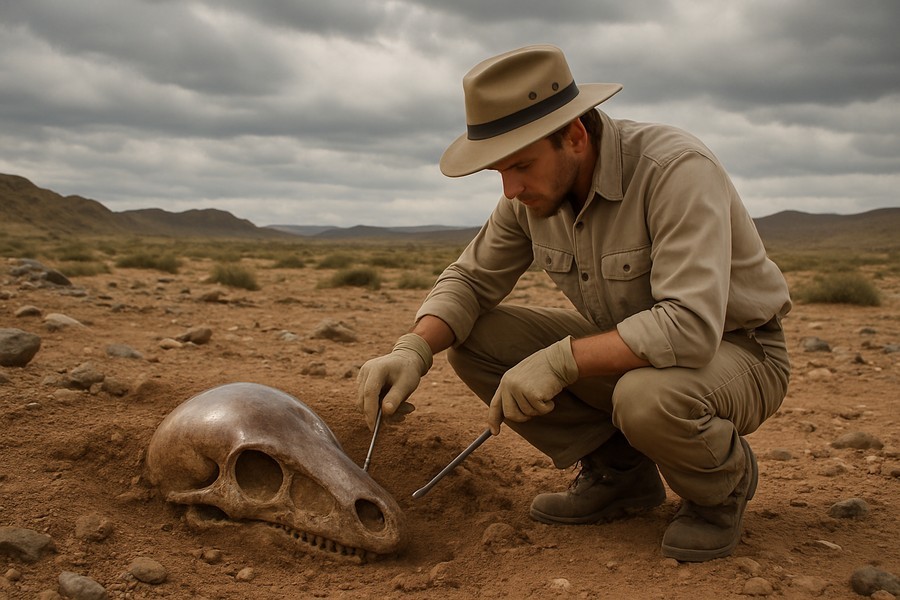
A Gleaming Discovery From The Past: Unearthing a New Dinosaur Species
Imagine stepping into the shoes of a paleontologist, making your way through the rocky landscapes of southeast Mongolia on a cloudy morning. Suddenly, something bright and unusual catches your eye on the other side of the hill. As you get closer, you realize it's not a rock, but an oddly shaped skull - a dinosaur skull to be precise. This is the exciting discovery made by Chinzorig Tsogtbaatar, currently working at a university in North Carolina.
The Discovery of a Unique Skull
The skull, dome-shaped and unlike anything seen before, was identified as a new species of pachycephalosaur. Pachycephalosaurs are a unique group of dinosaurs known for their thick, bony, domed skulls, but little else is known about them. This particular skull was so distinctive that it took the team's breath away. It is the first definitive pachycephalosaur ever found from the early Cretaceous period, with a fully developed dome and other distinctive features.
The new species has been introduced to the world in a scientific paper, where it was given the name Zavacephale rinpoche. The term rinpoche is Tibetan for "precious one", a fitting description for the domed skull that appeared like a perfectly polished jewel.
Unlocking the Secrets of the Past
This new specimen is considerably older than any other pachycephalosaur ever found, filling a critical gap in our understanding of the evolution of this group of dinosaurs. After its excavation, the fossil remained in Mongolia during a global health crisis. It was later shipped to North Carolina for further analysis.
Researchers were enchanted by the fossil. They described the precious skull as magical. The dome-shaped head, edged with spikes and made of solid bone, is a pachycephalosaur's most distinguishing feature. Researchers believe these domes were essentially indestructible, protecting the dinosaur's skull from pressure or impact, perhaps during battles using their heads.
Despite the wealth of information the skull provides, researchers have known relatively little about these plant-eating dinosaurs because most of their bodies have not been found. That's why the discovery of additional bones from the Zavacephale rinpoche was such a breakthrough. It became the most complete pachycephalosaur skeleton ever to be unearthed.
Unraveling the Mystery of the Tiny Dinosaur
The dinosaur was about the size of a German shepherd, with 75% of its body being a neck and a tail. Despite its size, it was a lightweight creature, weighing only about 12 pounds. This tiny dinosaur has already provided some new insights. Stones were found in its stomach that would have aided in digestion. Its tail was rigid due to bony tendons running through it. Interestingly, this was the first time a pachycephalosaur's hand bones had ever been found. The hands were so tiny that at first, researchers thought they were something the dinosaur had eaten!
The limb bones also provided researchers with the information needed to determine the age of this dinosaur. It was at least two years old, still a juvenile, yet it already had a fully developed dome. Whether these young dinosaurs were using their domes for battles over territory or mates is still uncertain. What is clear, however, is that these dinosaurs started practicing whatever they were doing with their domes at a very young age.
The specimen is now back in Mongolia at the Institute of Paleontology of the Mongolian Academy of Sciences, as part of the country's mission to protect its natural and cultural heritage. Other paleontologists around the world have expressed their amazement and a bit of friendly jealousy at this remarkable discovery. The beauty and completeness of this fossil have left many stunned, and it's sure to be a valuable resource for learning for years to come.
